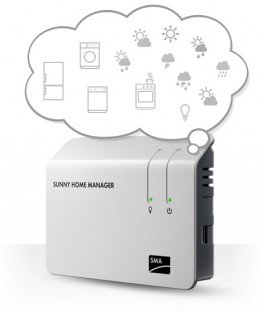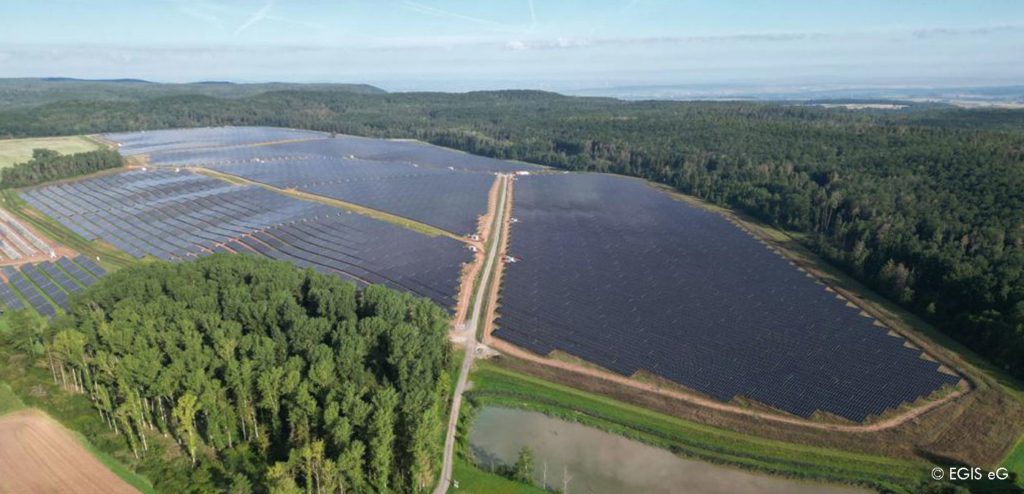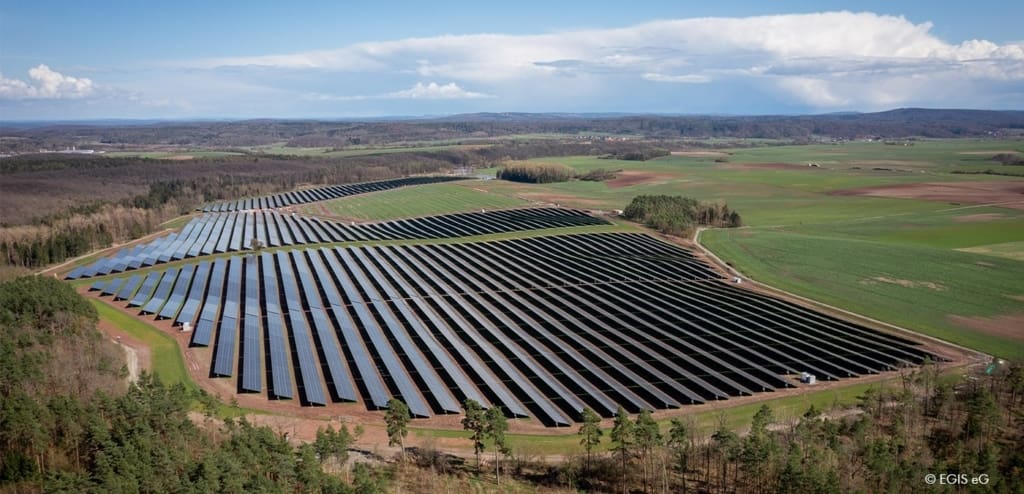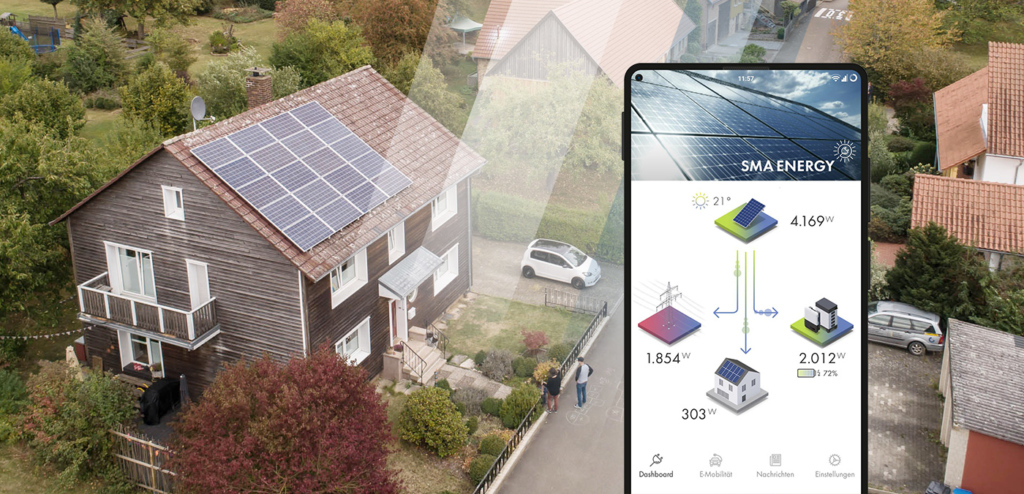Vision 2050: Full Supply with Renewable Energies

The year is 2050. Wind energy and photovoltaics have been maximized to a performance of 300 gigawatts, and capacities continue to grow. Germany has become the first country to generate power without the use of fossil fuels, setting the bar for the rest of the world. This achievement is not only credited to a few larger companies or to politics; each and every citizen played a part!
Electricity Prices
Electricity prices have not gone up for 20 years. They are even beginning to sink again due to a surplus of renewable energies. Germany is one of the few countries where electric current still costs less than 30 cents per kWh. Other countries have already reached outrageously high electricity prices of 50 – 60 cents per kWh, as they continued to rely on fossil fuels as an energy source for some time.
Here in Germany, low-income earners enjoy a particularly big advantage through renewable energy supply. Electric current is especially cheap at midday due to photovoltaics. Since energy suppliers began offering dynamic tariffs by the minute, everyone has the option of using electric current during the cheaper times of the day. Households lacking the finances to purchase new, energy-saving appliances can choose to use their larger appliances only during midday hours, consequently lowering electricity costs.
The Race for Renewable Energies
The world was captivated by Germany’s development over the past years – and today the rest of the world is competing for the biggest share of renewable energies. Each country wishes to harvest for itself the economic advantages that go hand-in-hand with a renewable energy supply. Money remains in the country and in the region, thus benefiting local purchasing power. Money no longer flows into the hands of oil and gas suppliers and no longer contributes to immense profits for major corporations.
Storage: Natural Gas
In 2020, Germany began constructing methanization plants on a large scale. These plants convert excessive power generation into gas. This gas can be stored in the existing natural gas grid for long periods of time. In this way, gas can be produced and stored in the gas grid during sunny and windy periods. Up until 2030, gas power plants were used during the winter months to keep up the production of electric current by means of gas created from renewable energy.
Due to a general shortage in resources, fuel oil prices have also skyrocketed. For this reason, today, heating of private homes is done using small combined heat and power plants which run on renewably produced methane gas. These small power plants in the basements of homes now produce the necessary electric current for private homes and for neighborhoods during not so sunny or windy periods. At the same time, these installations also provide heating, allowing gas to be used much more efficiently than in the past. Old gas power plants would emit a large amount of energy in the form of waste heat into the environment. Today, this heat is used to heat households.
Renewably produced gas has also proven useful for the transportation sector. Today, this type of gas is used as fuel for trucks and personal vehicles. Small, battery-powered vehicles, which can store electric current directly without converting it into gas, are becoming more and more common when driving short distances such as to and from work.
Bioenergy for the Balance of Peak Demands
The advantages of bioenergy are found primarily in the storage properties of the energy carriers. For this reason, bioenergy is used today to ensure the uninterrupted supply of electric current. During periods with no sunshine or wind, biogas and biomass plants make up for the lack in energy production.
In the past, biogas plants used primarily corn as an energy provider. This meant that large areas of land were no longer being used to cultivate food products. Today, principally algae and organic waste, such as agricultural by-products, are used as energy sources.
Apart from its use in power generation, bioenergy is also used for heating and fuel production.
Intelligent Consumption of Electric Current
Intelligent energy managers make sure that machines and household appliances run when cheap energy is available. As such, larger household appliances are assigned the sunniest or windiest periods of time, seeing as electric current which does not need to be stored is the cheapest.
Furthermore, the energy manager also ensures transparency. Energy guzzlers are revealed, and the use of a replacement can be calculated. 40 years ago, people were, at best, only able to calculate how much electric current a house consumed in a year. Nowadays, even children are aware of how much energy the TV or the lamp in the bedroom consumes.
In cases of utility grid bottlenecking brought on by too much or too little electric current, the energy managers installed in each and every home act as crisis coordinators. In case of emergency, they cut off loads which are not absolutely necessary, or they engage the loading of storage to defuse critical grid situations.
The Role of Energy Suppliers
In the past, we had large companies – so-called energy suppliers. Their business model consisted, for the most part, of electric current production. That business model died during the energy transition. These days, these companies still exist; but their tasks are different. They provide for the coordination of power generated from renewable energies. They offer services to bill end customers for power generation from renewable energies. They have production capacities at hand for the compensation of bottleneck situations – something which is, however, becoming less and less of an issue. What is more, they take care of the environmentally friendly removal of old nuclear, coal and gas power plants. An entirely new service sector of the energy industry has emerged employing many people.
Only a Vision?
Even today, photovoltaics and wind energy meet a large portion of the electricity demand. Battery banks are already being used in regions with unstable utility grids. One can also already purchase battery banks to increase self-consumption of solar power. Energy management systems and nano-CHP plants are already available on the market. A pilot methanization plant is already in operation.
Only a vision? It appears not. The future begins now. Every day the foundations for such a future are being laid through new technologies. Computers were once something used by technology freaks. Today, we are surrounded by computers – in our cars, on our cell phones and integrated into our televisions (even in the remote control).
I am convinced that we will see exactly the same path of development in the energy sector. Photovoltaics already reached the center of society some time ago and has evolved into one of the foundational pillars of energy supply. The next logical step is to relieve the utility grids through coordination of players in the energy market. Today, energy management remains a thing for technology enthusiasts and for those wishing to use their electric current themselves to become as self-sufficient as possible.
Or will things turn out differently? We will have to wait and see. I am looking forward to the things to come, as we are on the right path toward creating a future for our children with affordable, available and clean energy.
Do you also have your own vision of energy in the year 2050? I am looking forward to your comments!





Dear Christian
Please send me your contact details?
Regards
Richard Edwards
Hi Richard,
You can contact Christian via email, I will send you his address.
Regards,
Julia